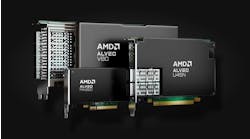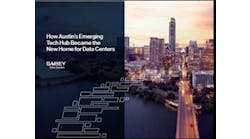The Evolving Landscape of Data Centers: Power, AI and Capital in 2025
The data center industry stands at a critical juncture, facing unprecedented growth opportunities alongside significant challenges. Drawing from JLL's 2025 Global Data Center Outlook, I’m here to share three key insights found in our research that will shape the industry in the coming year: the power grid challenge, the AI evolution and the evolving capital markets landscape.
Power Grid Challenges and Innovative Solutions
The rapid expansion of data center capacity is putting immense pressure on power grids worldwide. Our research predicts that global data center energy demand will double in the next five years, reaching 100 gigawatts by 2028. This surge is creating major power bottlenecks, particularly in established markets like Northern Virginia, Tokyo and London.
However, it's crucial to put this growth into perspective. We project that, while data centers are set to represent about 2% of global electricity consumption in 2025, the increased demand for data center electricity through 2030 will be less than a third of the increased electricity needed for electric vehicles or air conditioning.
But, with big challenges come innovative solutions. Small Modular Reactors (SMRs) are emerging as a promising option—they’re scalable nuclear reactors that could provide up to 300 megawatts of green-energy power to data centers. And while commercial deployment isn't expected until 2030 at the earliest, we anticipate SMR agreements to double in 2025, signaling growing enthusiasm for this technology.
The AI Revolution and Its Impact
Artificial Intelligence (AI) is fundamentally redefining the digital infrastructure landscape. The rapid advancement in semiconductor technology is driving unprecedented increases in server rack density. For instance, NVIDIA's next-generation GB200 chip is expected to reach rack densities of 130 kilowatts (kW)—a significant leap from its predecessor's 41 kW.
This shift is leading to AI data centers strategically splitting into two, with separate facilities for AI training (often built rural areas near cheap power sources) and inference (located closer to population centers). This separation mirrors the industrial sector's distinction between regional warehouses and last-mile facilities, as location is key to success.
The pace of AI innovation is accelerating with each new generation of GPUs. However, this progress comes with challenges. Industry experts agree that AI models are running out of high-quality, publicly available data to train on. Additionally, new models such as DeepSeek are challenging the law of scaling, which states that adding more data and computing power results in proportionally smarter AI models. AI innovation will continue at a rapid pace, requiring the industry to remain nimble and adapt quickly.
Capital Markets and Investment Trends
Despite economic uncertainties, investor conviction in data centers remains steadfast, supported by immense demand, limited supply and record rent growth. In 2025, we at JLL expect another record year for development financing, with an estimated 17 gigawatts projected to break ground or reach completion globally, equating to roughly $170 billion in asset value financing.
Private equity firms are playing a significant role, primarily gaining exposure to the sector through development financing. While global mergers and acquisitions activity may slow after a five-year period that saw over $200 billion in deals, we anticipate an increase in joint ventures, particularly in developing countries.
Asset trades are likely to increase only moderately in 2025, largely due to the significant bid-ask spreads caused by interest rate increases and variances in relet assumptions between buyers and sellers.
Conclusion
As we navigate 2025, the data center industry faces a complex landscape of challenges and opportunities. The interplay between power constraints, AI advancements and evolving capital markets will determine the sector's trajectory. Success will hinge on the ability to innovate in power generation and distribution, adapt to the demands of AI workloads and navigate a changing investment landscape.
As we move forward, collaboration between industry players, policymakers and communities will be key to addressing these challenges and capitalizing on the immense opportunities that are ahead. We at JLL are experts at building and executing smart data center strategies and can help you sail through these complex waters, so be sure to reach out so we can select the right location and reliable power solutions you need to thrive.

Andrew Batson
Andrew Batson is the Head of Americas Data Center Research at JLL. In this role, Andrew delivers insights and analytics to clients and JLL’s leadership team. Deliverables include sector analysis, insights on industry trends, forecasting, benchmarking, market sizing, portfolio analytics and market share analysis. Andrew has 16 years of experience in commercial real estate and related industries.






